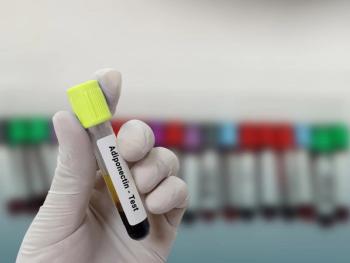
High White Blood Cell Counts Are Associated With Long-Term Acute COPD Exacerbations, Study Says
The study's findings suggest that high baseline white blood cell count, particularly high neutrophil count, was associated with a higher incidence of long-term acute exacerbation of chronic obstructive pulmonary disease (COPD).
Patients with
The researchers explained that AECOPD can be associated with significant morbidity and mortality, especially in patients with multiple comorbidities or more impaired lung function. They noted that AECOPD can be triggered by various factors, like respiratory infections and air pollution. Similarly, systemic inflammation causes the progression or worsening of COPD outcomes.
The researchers explained that complete blood count (CBC) can measure various inflammation components, including WBC count. They noted that, depending on patients' COPD stage and severity, WBC may show increased/decreased neutrophil and monocyte counts. Additionally, composite inflammatory biomarkers, which include the neutrophil/lymphocyte ratio (NLR), monocyte/lymphocyte ratio (MLR), and platelet/lymphocyte ratio, can also be calculated using values obtained from CBC.
The researchers noted that the association of AECOPD risk with WBC differential count and WBC-derived inflammatory markers is “poorly understood,” so they conducted a study to evaluate the predictive value of WBC differential count and WBC-derived inflammatory biomarkers for 3-year AECOPD in Korean patients with COPD. The study's primary outcome was the occurrence of AECOPD at 3 years, and the secondary outcome was the cumulative occurrence of AECOPD over the 3 years, starting from the time of enrollment.
They created their study population by screening 3478 patients with COPD registered in the Korean COPD Subtype Study (KOCOSS) cohort from 2012 to 2017. After excluding patients without baseline CBC data (n = 478) or 3-year follow-up data for AECOPD occurrence (n = 2174), the study population consisted of 826 patients. Of the included patients, 758 (91.8%) were men and 68 (8.2%) were women; the patients had a mean age of 68.6 years.
AECOPD occurrence was documented through self-reporting questionnaires and medical chart reviews conducted at yearly intervals. Also, the total WBC, lymphocyte, neutrophil, monocyte, eosinophil, and basophil counts were measured at the time of enrollment. The researchers noted that they used the initial CBC test to calculate the following WBC-derived composite parameters: NLR, MLR, derived neutrophil/lymphocyte ratio (dNLR), neutrophil/monocyte ratio, platelet/lymphocyte ratio, and eosinophil/basophil ratio (EBR). For those with available follow-up CBC data at 1, 2, and 3 years, the researchers determined changes in WBC differential parameters for each by calculating differences between the baseline and follow-up values.
The researchers determined the cumulative incidences of 12-, 24-, and 36-month AECOPD to be 47.6%, 60.5%, and 67.6%, respectively. Compared with those without AECOPD, patients with AECOPD at 3 years had higher baseline WBC counts, neutrophil counts, NLR, and neutrophil/monocyte ratio. In the univariate analysis, a higher WBC count, NLR, and neutrophil count were associated with 3-year AECOPD occurrence. Despite this, in the covariates-adjusted analysis, only the higher neutrophil count was found to be a significant AECOPD risk factor (OR, 1.468; 95% CI, 1.024-2.104).
In the analysis of inflammatory parameter changes, the researchers found that a decrease in the platelet count (OR, 0.502; 95% CI, 0.280-0.902) and NLR (OR, 0.535; 95% CI, 0.294-0.974) at 2 years was significantly associated with AECOPD in the adjusted analysis. An increase in the eosinophil count (OR, 2.130; 95% CI, 1.027-4.416) at 3 years was also significantly associated with AECOPD.
“These results indicate that WBC differential count and WBC derived parameters may serve as useful predictive markers for AECOPD,” the authors wrote.
The researchers acknowledged their study’s limitations, one being that the study design was based on pre-existing data; its findings were limited by the accuracy and completeness of the recorded data. Also, the study population was based on data from the KOCOSS, meaning that the findings are not generalizable to those of different ethnicities. Despite these limitations, the researchers expressed confidence in their findings and made suggestions for future research.
“Further prospective studies are required to confirm these findings and explore the underlying mechanisms,” the authors wrote. “Despite these limitations, the present study provided valuable insights into the predictive value of WBC differential count and derived parameters for the incidence of 3-year AECOPD in the Korean population.”
Reference
Yoon EC, Koo SM, Park HY, et al. Predictive role of white blood cell differential count for the development of acute exacerbation in Korean chronic obstructive pulmonary disease. Int J Chron Obstruct Pulmon Dis. 2024;19:17-31. doi:10.2147/COPD.S435921
Newsletter
Stay ahead of policy, cost, and value—subscribe to AJMC for expert insights at the intersection of clinical care and health economics.












































